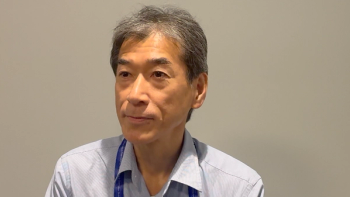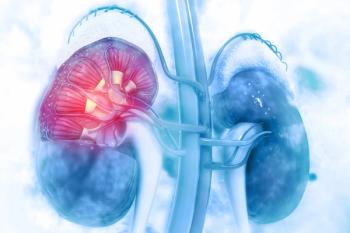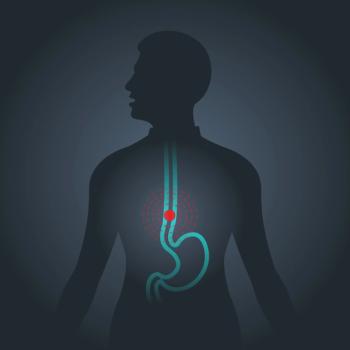
Alpelisib Combo Does Not Extend PFS in High-Grade Serous Ovarian Cancer
Additional research on novel targeted therapies may be necessary to address the unmet needs in this high-grade serous ovarian cancer population.
Combining alpelisib (Piqray) with olaparib (Lynparza) did not improve progression-free survival (PFS) vs chemotherapy among patients with platinum-resistant or platinum-refractory high-grade serous ovarian cancer (HGSOC) without a BRCA mutation, according to findings from the phase 3 EPIK-O/ENGOT-ov61 trial (NCT04729387) published in the Journal of Clinical Oncology.1
Based on blinded independent review committee (BIRC) assessment, the median PFS was 3.6 months (95% CI, 3.4-4.3) with the alpelisib combination vs 3.9 months (95% CI, 3.7-5.4) with chemotherapy (HR, 1.14; 95% CI, 0.88-1.48; P = .84). Additionally, the median PFS was 3.7 months in both arms based on investigator evaluation (HR, 1.02; 95% CI, 0.79-1.30; P = .54).
Data revealed an objective response rate of 15.6% (95% CI, 10.6%-21.7%) in the experimental arm vs 13.5% (95% CI, 8.8%-19.4%) in the comparator arm. The clinical benefit rate (CBR) was 21.1% and 19.1% in each respective arm, and the median duration of response (DOR) was 7.4 months (95% CI, 5.0-12.9) vs 5.6 months (95% CI, 3.8-not evaluable).
Due to the trial being unable to demonstrate statistical significance for PFS, investigators did not formally evaluate overall survival (OS). The median OS was 10.0 months with alpelisib/olaparib vs 10.6 months with chemotherapy (HR, 1.22; 95% CI, 0.87-1.71), and OS events occurred in 41.7% and 35.4% of each respective arm.
“This protocol-specified final PFS analysis of EPIK-O/ENGOT-ov61 did not meet its primary efficacy end point of PFS improvement with alpelisib [plus] olaparib vs treatment of physician’s choice [TPC] in patients with platinum-resistant [or] platinum-refractory HGSOC with no BRCA mutation,” lead study author Panagiotis A. Konstantinopoulos, MD, PhD, director of the Mellen and Eisenson Family Center for BRCA and Related Genes and director of translational research in the Division of Gynecologic Oncology at Dana-Farber Cancer Institute, wrote with coauthors in the publication.1 “Additional treatment strategies are being explored in platinum-resistant HGSOC, and additional research into novel targeted therapies is warranted to address the unmet needs in this patient population.”
In the multicenter, open-label EPIK-O trial, 358 patients were randomly assigned to receive alpelisib plus olaparib (n = 180) or TPC (n = 178). Patients in the experimental arm received alpelisib at 200 mg orally once daily plus olaparib at 200 mg once daily in each 28-day cycle. Treatment in the TPC arm consisted of paclitaxel at 80 mg/m2 intravenously once weekly or pegylated liposomal doxorubicin at 40 to 50 mg/m2 once every 28 days.
The trial’s primary end point was PFS per BIRC using RECIST v1.1 criteria. Secondary end points included OS, DOR, CBR, and safety.
Patients aged 18 to 100 years with histologically confirmed high-grade serous/high-grade endometrioid ovarian cancer, fallopian tube cancer, or primary peritoneal cancer were eligible for enrollment in the trial.2 Additional eligibility criteria included having no germline BRCA1/2 mutations, an ECOG performance status of 0 or 1, platinum-resistant or platinum-refractory disease, and adequate bone marrow and organ function.
The median age was 61 years (range, 32-81) in the alpelisib/olaparib arm and 61 years (range, 37-84) in the TPC arm. Most patients in each respective arm had an ECOG performance status of 0 (63.9% vs 61.2%), no ascites (78.3% vs 83.1%), serous adenocarcinoma histology (92.2% vs 97.2%), intra-abdominal disease (85.0% vs 87.1%), 1 metastatic site (40.6% vs 44.4%), and measurable disease (90.6% vs 86.5%). Additionally, a majority in each arm had no prior treatment with PARP inhibitors (66.7% vs 62.9%), although most were previously treated with bevacizumab (Avastin; 80.6% vs 78.7%).
Adverse effects (AEs) of any grade affected 98.9% of the alpelisib arm and 97.6% of the chemotherapy arm, with serious AEs occurring in 51.1% and 30.5%, respectively. The most common types of any-grade AEs in each arm included nausea (61.7% vs 31.7%), hyperglycemia (52.2% vs 3.7%), vomiting (41.1% vs 20.7%), and diarrhea (41.1% vs 18.3%). Grade 3 or higher AEs in each arm included hyperglycemia (18.9% vs 0%), vomiting (10.0% vs 1.2%), nausea (9.4% vs 1.2%), and anemia (7.2% vs 4.9%).
Dose reductions for alpelisib, olaparib, and TPC occurred in 36.7%, 45.6%, and 20.1% of patients, respectively; dose interruptions were necessary in 66.7%, 52.8%, and 20.1%. Additionally, 14.4% and 4.3% of patients in the alpelisib and TPC arms experienced on-treatment deaths. One patient in the alpelisib/olaparib arm had a treatment-related fatal serious AE.
References
- Konstantinopoulos PA, Kim JW, Freyer G, et al. Alpelisib plus olaparib versus chemotherapy in platinum-resistant or platinum-refractory high-grade serous ovarian cancer without BRCA mutation. J Clin Oncol. Published online July 23, 2025. doi:10.1200/JCO-25-00225
- Alpelisib plus olaparib in platinum-resistant/refractory, high-grade serous ovarian cancer, with no germline BRCA mutation detected. ClinicalTrials.gov. Updated February 12, 2025. Accessed August 11, 2025. https://tinyurl.com/2ka8xx4v
Newsletter
Stay up to date on recent advances in the multidisciplinary approach to cancer.




















































































